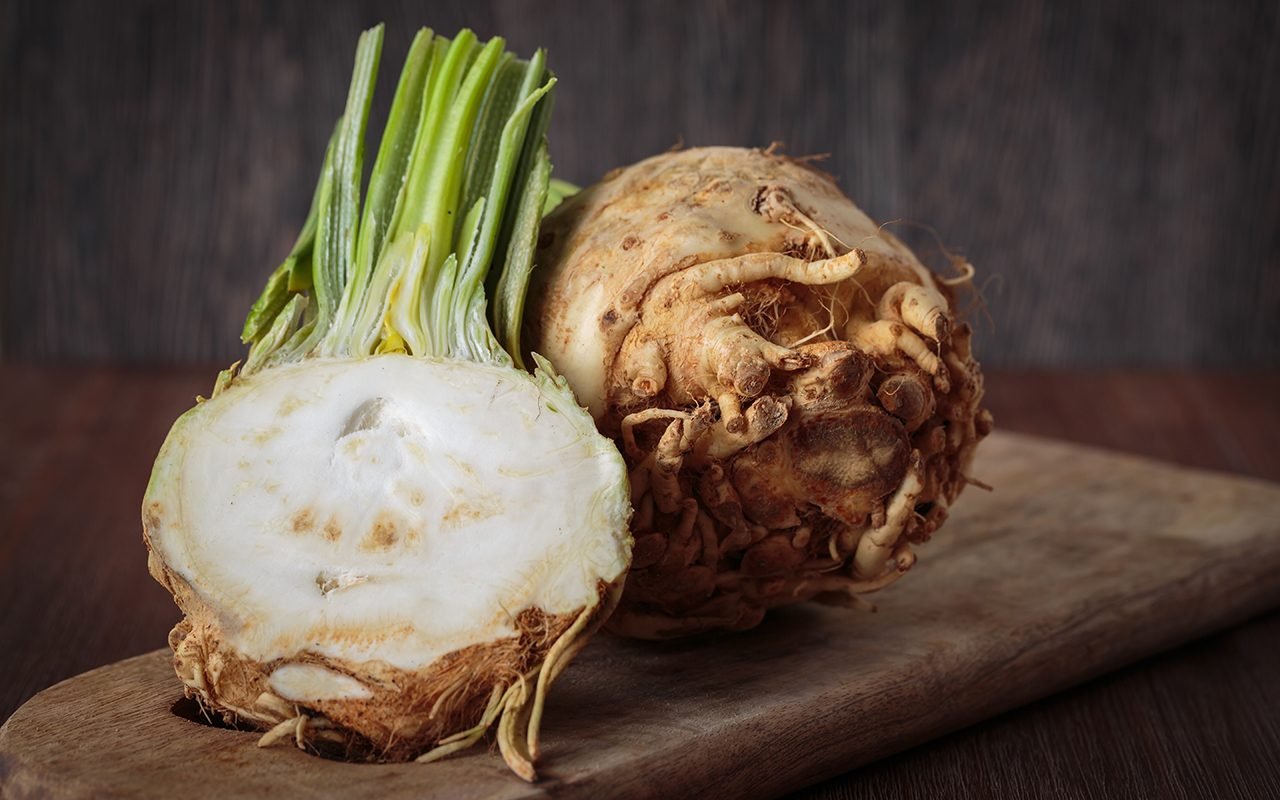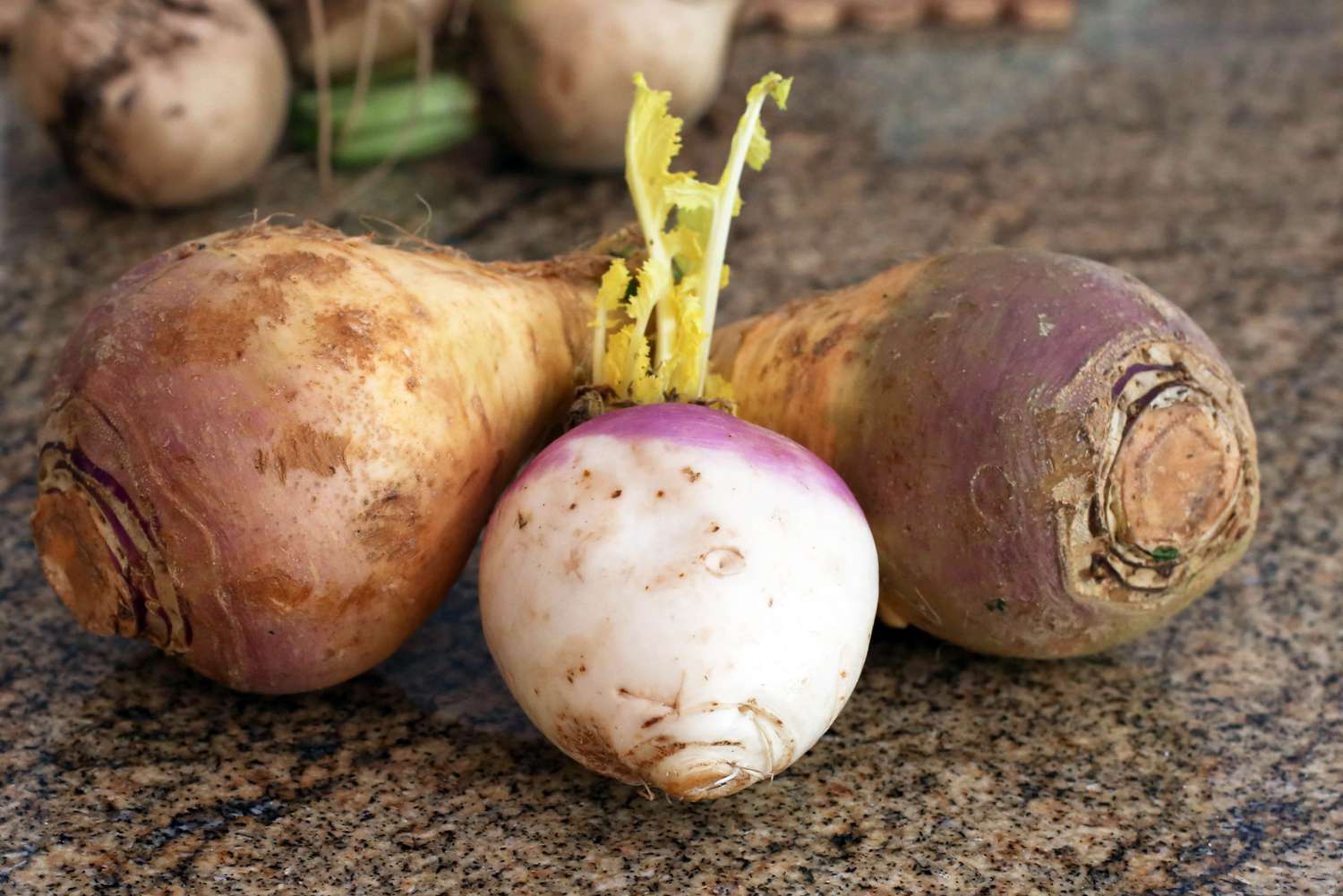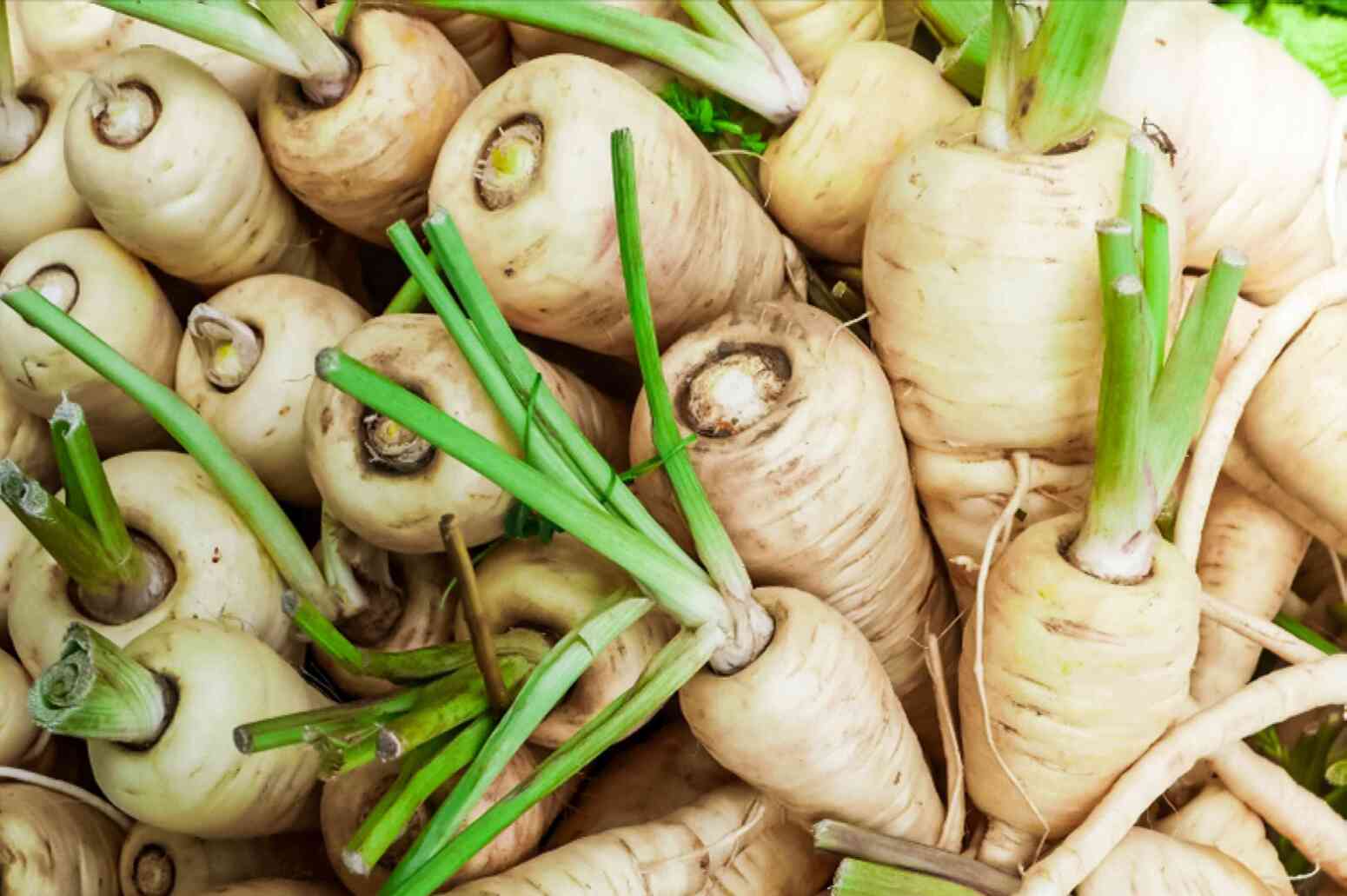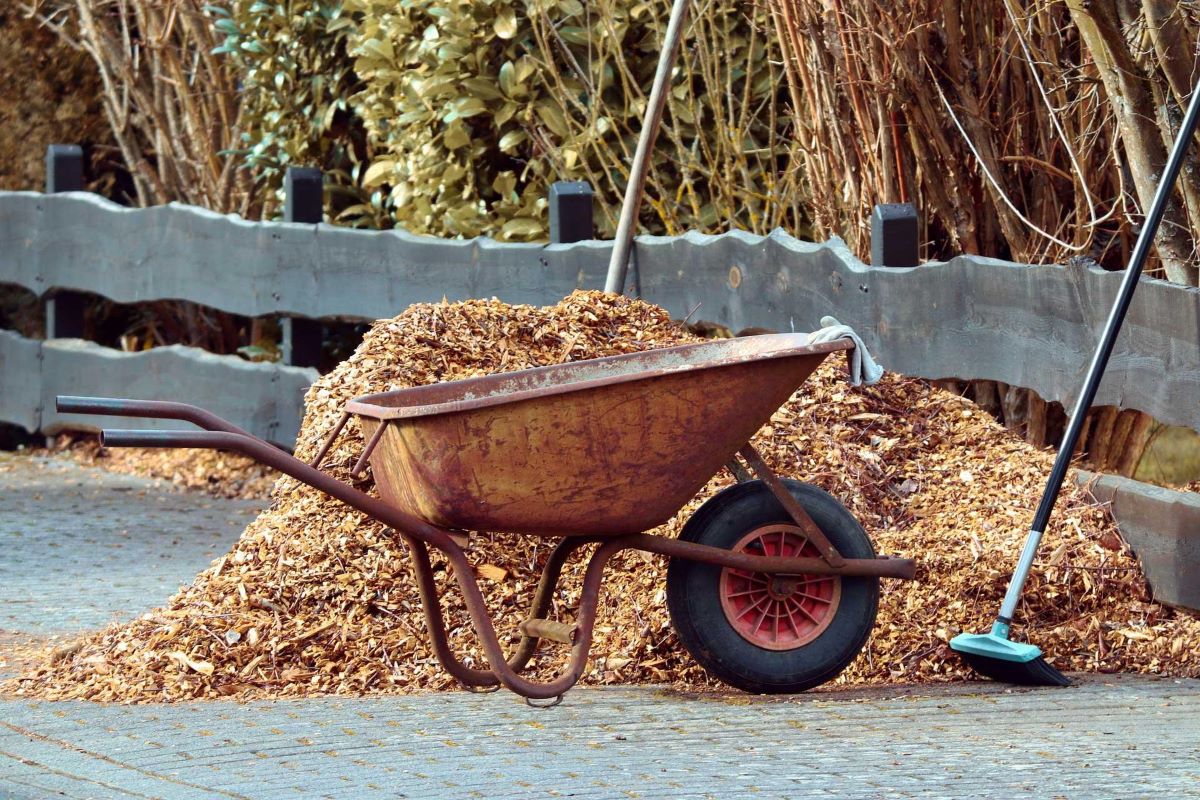

Articles
How To Store Celeriac
Modified: December 7, 2023
Discover helpful articles on how to store celeriac and keep it fresh for longer. Learn the best techniques and tips from our expert guides.
(Many of the links in this article redirect to a specific reviewed product. Your purchase of these products through affiliate links helps to generate commission for Storables.com, at no extra cost. Learn more)
Introduction
Welcome to our comprehensive guide on how to store celeriac! Celeriac, also known as celery root, is a versatile and delicious vegetable that is often used in soups, stews, and roasted dishes. It is packed with nutrients and has a unique flavor that adds depth to any culinary creation.
However, celeriac can be a bit tricky to store, as it requires specific conditions to maintain its freshness and flavor for an extended period. In this article, we will walk you through the steps to select the best celeriac, as well as the proper methods for storing it to prolong its shelf life.
Whether you have a surplus of celeriac from your garden or you’ve bought it in bulk from the market, these tips will ensure that you can enjoy this versatile vegetable for weeks to come. So, let’s dive in and learn how to store celeriac like a pro!
Key Takeaways:
- Properly storing celeriac in the refrigerator, root cellar, or freezer can extend its shelf life, allowing you to enjoy this versatile and nutritious vegetable in various culinary creations for weeks or even months.
- Selecting the best celeriac, preparing it for storage, and following essential tips for maintaining its quality are crucial steps in ensuring that you can store celeriac like a pro and savor its unique flavor year-round.
Read more: How To Store Basil From Store
What is Celeriac?
Celeriac, also known as celery root, is a vegetable that belongs to the celery family. While it may not be the most visually appealing vegetable, celeriac offers a delicious and unique flavor that is often described as a combination of celery and parsley.
Celeriac is known for its bulbous root, which is the part of the plant that is typically consumed. The exterior of the root is rough and knobby, while the inside is creamy white. It has a crisp and crunchy texture when raw, but becomes tender and creamy when cooked.
One of the key reasons why celeriac is prized in the culinary world is its versatility. It can be used in a variety of dishes, both raw and cooked. When raw, it can be grated or shredded and added to salads for a refreshing and slightly nutty flavor. When cooked, celeriac can be boiled, mashed, roasted, or used as an ingredient in soups and stews.
In addition to its culinary uses, celeriac is also packed with nutrients. It is a good source of dietary fiber, vitamin C, potassium, and phosphorus. It is also low in calories, making it a great option for those looking to maintain a healthy diet.
Now that we have a good understanding of what celeriac is, let’s move on to the next section where we will learn how to select the best celeriac for storage.
Selecting Celeriac
When it comes to selecting celeriac, there are a few key factors to consider to ensure you choose the best quality root for storage:
1. Size and Shape: Look for celeriac roots that are firm and compact. Avoid those that are oversized or have an irregular shape, as they may indicate a fibrous or woody texture.
2. Texture: Inspect the outer skin of the celeriac. It should be smooth, with no major blemishes or cracks. Avoid roots that have soft spots or signs of rot.
3. Weight: A heavy celeriac root is generally an indication of freshness and moisture content. Pick up the root and feel its weight in your hand – it should feel dense and substantial.
4. Aroma: Give the celeriac a sniff. It should have a fresh, earthy scent. Avoid roots that have a strong or unpleasant odor, as it may indicate spoilage.
5. Leaves: While not essential, celeriac leaves can provide a clue about the freshness of the root. Look for vibrant green leaves that are still attached to the root. Avoid celeriac with wilted or yellowing leaves.
Remember, celeriac can vary in size and shape, so choose the roots that best meet the above criteria. It’s always a good idea to inspect multiple roots before making a final selection. Once you have chosen the perfect celeriac, it’s time to learn how to store it properly to maintain its freshness and flavor.
In the next section, we will discuss the methods for storing celeriac, including the refrigerator, root cellar, and freezer. Stay tuned to discover the best storage techniques for this versatile vegetable!
Storing Celeriac
Proper storage is crucial for maintaining the freshness and flavor of celeriac. Depending on the duration you wish to store it for, there are a few different methods you can use. Let’s explore the options:
Storing Celeriac in the Refrigerator
If you plan to use the celeriac within a week or two, storing it in the refrigerator is a great option. Follow these steps:
- Trim off the leaves and any excess roots from the celeriac.
- Wrap the whole celeriac tightly in a damp paper towel.
- Place the wrapped celeriac in a plastic bag or airtight container.
- Store in the refrigerator’s crisper drawer or a vegetable compartment.
By wrapping the celeriac in a damp paper towel, you help maintain its moisture and prevent it from drying out. The cool temperature of the refrigerator will slow down the vegetable’s natural aging process, extending its shelf life.
Read more: How To Store Store-Bought Bread
Storing Celeriac in the Root Cellar
If you have access to a root cellar or a cool, dark, and humid basement, you can store celeriac for a longer period of time. Here’s how:
- Clean the celeriac by removing the leaves and excess soil.
- Place the celeriac in a wooden crate or a perforated container.
- Ensure that the celeriac roots are not touching each other to prevent any rotting.
- Store the crate or container in a cool and humid location, ideally around 32-40°F (0-4°C) with a humidity level of 85-95%.
- Regularly check the celeriac for any signs of decay or rot and remove any spoiled roots to prevent the spread of spoilage.
Storing celeriac in a root cellar allows it to stay fresh for a longer period, sometimes up to several months. The cool and humid environment helps maintain the vegetable’s texture and flavor.
Storing Celeriac in the Freezer
If you want to extend the storage life of celeriac even further, you can freeze it. Freezing celeriac requires some preparation, but it can be a convenient option. Here’s what you need to do:
- Clean and peel the celeriac root.
- Cut the celeriac into cubes or slices, depending on your preference.
- Blanch the celeriac in boiling water for 2-3 minutes.
- Transfer the blanched celeriac immediately to an ice bath to stop the cooking process.
- Drain the celeriac well and place it in airtight freezer bags or containers.
- Label the bags or containers with the date and store them in the freezer.
Frozen celeriac can retain its quality for around 10-12 months. However, keep in mind that freezing may slightly alter the texture of the vegetable. Frozen celeriac is best used in cooked dishes such as stews, soups, and casseroles.
Now that we have covered the various storage methods, it’s important to know how to properly prepare celeriac for storage. In the next section, we will discuss the steps to take before storing celeriac to ensure its longevity. Stay tuned for the tips!
Preparing Celeriac for Storage
Before you store celeriac, it’s important to properly prepare it to ensure its longevity. Follow these steps to prepare celeriac for storage:
1. Wash: Start by giving the celeriac a thorough wash under cold running water to remove any dirt or debris. Use a gentle brush to scrub the surface if needed, but be careful not to damage the skin.
2. Trim: Trim off the leaves, leaving about an inch of stem attached to the celeriac. Removing the leaves helps prevent moisture loss and allows for better storage.
3. Peel: If desired, you can peel the celeriac to remove the rough outer skin. Use a vegetable peeler or a sharp knife to carefully remove the skin, ensuring to remove any brown discoloration or blemishes.
4. Cut: Depending on your storage preference, you can either store the celeriac as a whole or cut it into smaller pieces. If storing it whole, leave the root intact. If cutting into pieces, slice or cube the celeriac according to your preferred size.
5. Blanch (optional): If you plan to freeze the celeriac, blanching it before freezing can help preserve its texture and color. Refer to the instructions in the previous section on storing celeriac in the freezer for the blanching process.
6. Dry: After cleaning, trimming, and peeling, it’s important to dry the celeriac thoroughly. Excess moisture can lead to rot or spoilage. Pat the celeriac pieces or whole root with a clean towel to remove any moisture.
Once you have properly prepared the celeriac, you can proceed to store it according to your chosen storage method. Whether you opt for the refrigerator, root cellar, or freezer, be sure to follow the instructions mentioned in the previous sections for optimal storage conditions.
Now that you know how to prepare celeriac for storage, let’s move on to some tips on how to maintain its quality and freshness during storage. These tips will help you make the most of your stored celeriac and ensure a delicious culinary experience.
Storing Celeriac in the Refrigerator
If you plan to use celeriac within a week or two, storing it in the refrigerator is an ideal option. The cool temperature of the refrigerator helps to slow down the aging process and maintain the freshness of the vegetable. Here’s how to store celeriac in the refrigerator:
- Prepare: Start by removing any excess roots and trimming the leaves from the celeriac. However, it’s best to leave about an inch of stem attached to the root as this helps to preserve its moisture.
- Wrap: Take a clean, damp paper towel and wrap the whole celeriac tightly. Wrapping the celeriac in a damp paper towel helps to maintain its moisture and prevent it from drying out.
- Contain: Place the wrapped celeriac in a plastic bag or an airtight container. This additional layer of protection will help prevent any odors from affecting the vegetable and maintain its freshness.
- Store: Store the wrapped celeriac in the crisper drawer or a vegetable compartment of your refrigerator. These areas provide the ideal cool and slightly humid environment necessary for prolonging the shelf life of the celeriac.
It’s important to note that storing celeriac in the refrigerator will typically keep it fresh for about 2-3 weeks. However, the root may start to lose some of its flavor and crispness over time, so it’s best to use it as soon as possible for the best culinary experience.
Remember to periodically check the celeriac for any signs of spoilage, such as mold, soft spots, or a foul odor. If you notice any such signs, discard the affected parts or the entire root to prevent the spread of spoilage.
Storing celeriac in the refrigerator is a convenient option, especially if you plan to use it in various dishes within a short period. However, if you have a larger amount of celeriac and want to store it for a longer time, consider other storage methods such as the root cellar or freezer. We will discuss these methods in the upcoming sections, so stay tuned!
Read more: How To Store Basil From Grocery Store
Storing Celeriac in the Root Cellar
If you have access to a root cellar or a cool, dark, and humid basement, storing celeriac in these conditions can be an excellent option. The root cellar provides an environment that mimics the natural conditions in which celeriac grows, helping to maintain its freshness for an extended period. Here’s how to store celeriac in a root cellar:
- Clean: Start by cleaning the celeriac roots, removing any excess soil or dirt. You can gently brush the surface to remove any clinging debris, but avoid washing the celeriac as excess moisture can lead to rotting.
- Prepare the Storage Area: Ensure that the root cellar or basement is cool, ideally with a temperature range of 32-40°F (0-4°C). It’s important to maintain a constant temperature within this range to preserve the quality of the celeriac. Additionally, the humidity level should be between 85-95% to prevent the celeriac from drying out.
- Storage Containers: Place the cleaned celeriac roots in wooden crates or perforated containers. These containers allow for proper air circulation, preventing moisture buildup and ensuring the roots stay fresh.
- Avoid Contact: Make sure the celeriac roots are not touching each other in the container. Preventing contact between the roots helps to prevent the spread of spoilage if one root starts to deteriorate.
- Regular Check-ups: Periodically inspect the stored celeriac for any signs of decay, mold, or rot. It’s essential to remove any spoiled roots immediately to prevent the spread of spoilage to the rest of the batch.
Storing celeriac in a root cellar can extend its freshness for several months, allowing you to enjoy the vegetable throughout the colder months. The cool and humid environment of the root cellar helps to maintain the texture and flavor of the celeriac, providing you with high-quality produce whenever you need it.
Remember, the key to successful celeriac storage in a root cellar is to maintain the ideal temperature and humidity levels consistently. Regularly monitor the storage conditions and make any necessary adjustments to ensure the best storage outcome.
While the root cellar is a great storage option, if you want to store celeriac for an even longer duration, freezing it may be a viable alternative. In the next section, we will discuss how to store celeriac in the freezer, so keep reading to learn more!
Store celeriac in a cool, dark place, such as the refrigerator crisper drawer or a root cellar. Keep it unwashed and wrapped in a paper towel or plastic bag to retain moisture and prevent wilting.
Storing Celeriac in the Freezer
If you have a surplus of celeriac or want to extend its shelf life for an extended period, storing it in the freezer is an excellent option. Freezing celeriac allows you to enjoy its flavors and nutrients even months after harvest. Follow these steps to store celeriac in the freezer:
- Clean and Peel: Start by cleaning the celeriac roots, removing any dirt or debris. Peel the celeriac using a vegetable peeler or a knife to remove the tough outer skin.
- Cut into Pieces: Cut the celeriac into cubes or slices based on your preference and how you plan to use it later. Remember that smaller pieces freeze and thaw more quickly.
- Blanch: Blanching helps preserve the texture and color of the celeriac before freezing. Bring a pot of water to a boil and blanch the celeriac pieces for 2-3 minutes.
- Ice Bath: Immediately transfer the blanched celeriac to an ice bath to stop the cooking process. The ice bath cools down the celeriac quickly and helps maintain its crispness.
- Drain and Dry: Drain the celeriac well to remove any excess water. Pat the pieces with a clean towel to ensure they are dry.
- Freeze: Place the blanched and dried celeriac pieces in airtight freezer bags or containers. Make sure to label them with the date for easy reference. Remove any excess air from the bags to prevent freezer burn.
- Storage: Store the celeriac in the freezer at a consistent temperature of 0°F (-18°C) or below. This temperature ensures that the celeriac remains frozen and maintains its quality.
Frozen celeriac can retain its quality for about 10-12 months. However, it’s important to note that freezing may slightly alter the texture of the vegetable. While it may not be suitable for raw preparations like salads, frozen celeriac works well in cooked dishes such as soups, stews, and casseroles.
When using frozen celeriac, you can add it directly to your dishes without thawing. Its texture may become softer after freezing, which can be advantageous in recipes where a softer texture is desired. Remember to adjust cooking times accordingly, as frozen celeriac may take slightly longer to cook than fresh.
Freezing celeriac is a practical way to preserve the vegetable for an extended period, ensuring that you always have this flavorful ingredient on hand. Now that you are aware of freezer storage, let’s move on to some essential tips for maintaining celeriac’s quality, regardless of the storage method.
Tips for Maintaining Celeriac Quality
To ensure the best quality and flavor of celeriac throughout its storage period, here are some essential tips to consider:
1. Monitor Storage Conditions: Whether you’re storing celeriac in the refrigerator, root cellar, or freezer, it’s crucial to monitor the storage conditions regularly. Check the temperature, humidity, and any signs of spoilage or decay. Make any necessary adjustments to maintain optimal storage conditions.
2. Handle with Care: Celeriac is a delicate root vegetable, so handle it with care to avoid bruising or damaging the skin. Rough handling can lead to accelerated spoilage and shorter shelf life.
3. Remove Spoiled Pieces: Regularly inspect the stored celeriac for any signs of mold, soft spots, or discoloration. If you notice any spoilt pieces, remove them immediately to prevent the spread of spoilage to other parts of the celeriac batch.
4. Do Not Wash Before Storage: Avoid washing celeriac before storage, as excess moisture can lead to rotting and spoilage. Only wash the celeriac right before using it in your recipes to maintain its freshness.
5. Store Separately: Store celeriac separately from other fruits and vegetables, as it may release ethylene gas, which can accelerate spoilage in some produce. Keeping celeriac in its own designated space or container will help maintain its quality.
6. Use Sealable Containers: When storing celeriac in the refrigerator or freezer, use sealable containers or airtight bags. These containers prevent odors from other foods from affecting the flavor of the celeriac and help maintain its freshness.
7. Rotate the Stock: If you have multiple celeriac roots in storage, make sure to rotate them. Use the older ones first to ensure that they are consumed before any signs of spoilage occur.
8. Label and Date: Properly label and date the stored celeriac packages or containers. This will help you keep track of the storage duration and prioritize the use of the older celeriac first.
9. Cut and Freeze Excess: If you have more celeriac than you can consume, consider cutting it into pieces and freezing them. This way, you can easily take out the desired amount whenever you need it, reducing waste and ensuring the availability of celeriac whenever required.
10. Regularly Use and Rotate Frozen Celeriac: If you’ve frozen celeriac, try to use it regularly and rotate the stock. This way, you’ll utilize the frozen celeriac before its quality starts to deteriorate.
By following these tips, you can maximize the shelf life and keep the celeriac in its best condition, whether stored in the refrigerator, root cellar, or freezer. Now that you have a thorough understanding of how to store and maintain celeriac’s quality, you can confidently enjoy this versatile vegetable for an extended period.
Conclusion
Storing celeriac properly is essential to maintain its freshness, flavor, and nutritional value for an extended period. Whether you have a surplus from your garden or want to prolong its shelf life after purchasing, following the right storage methods can ensure that you have delicious celeriac whenever you need it.
We discussed several storage methods, including storing celeriac in the refrigerator, root cellar, and freezer. Each method offers different durations of storage, allowing you to choose the option that suits your needs best. Storing celeriac in the refrigerator is ideal for short-term storage, while the root cellar provides a cool and humid environment for medium-term storage. Freezing celeriac is a great option for long-term storage, although the texture may slightly change after thawing.
Remember to select the best celeriac by considering factors like size, shape, texture, weight, and aroma. Properly prepare celeriac by cleaning, trimming, and peeling it before storage. Whether wrapping it in a damp paper towel, placing it in a container, or preparing it for freezing, each storage method requires specific steps to ensure optimal results.
Lastly, we provided essential tips for maintaining celeriac quality, such as monitoring storage conditions, handling it with care, removing spoiled pieces, and properly labeling and dating the stored celeriac. These tips will help you make the most of your stored celeriac and enjoy it in various culinary creations.
Now that you have a comprehensive guide on how to store celeriac, it’s time to put it into practice. Enjoy the versatility and unique flavor of celeriac in your favorite recipes throughout the year, thanks to proper storage techniques. Whether it’s used in soups, stews, salads, or roasted dishes, celeriac is sure to add a delicious twist to your meals.
So, go ahead and start storing celeriac like a pro. With the knowledge and tips provided in this article, you can confidently store celeriac and enjoy its fantastic taste whenever you desire. Happy cooking!
Frequently Asked Questions about How To Store Celeriac
Was this page helpful?
At Storables.com, we guarantee accurate and reliable information. Our content, validated by Expert Board Contributors, is crafted following stringent Editorial Policies. We're committed to providing you with well-researched, expert-backed insights for all your informational needs.














0 thoughts on “How To Store Celeriac”